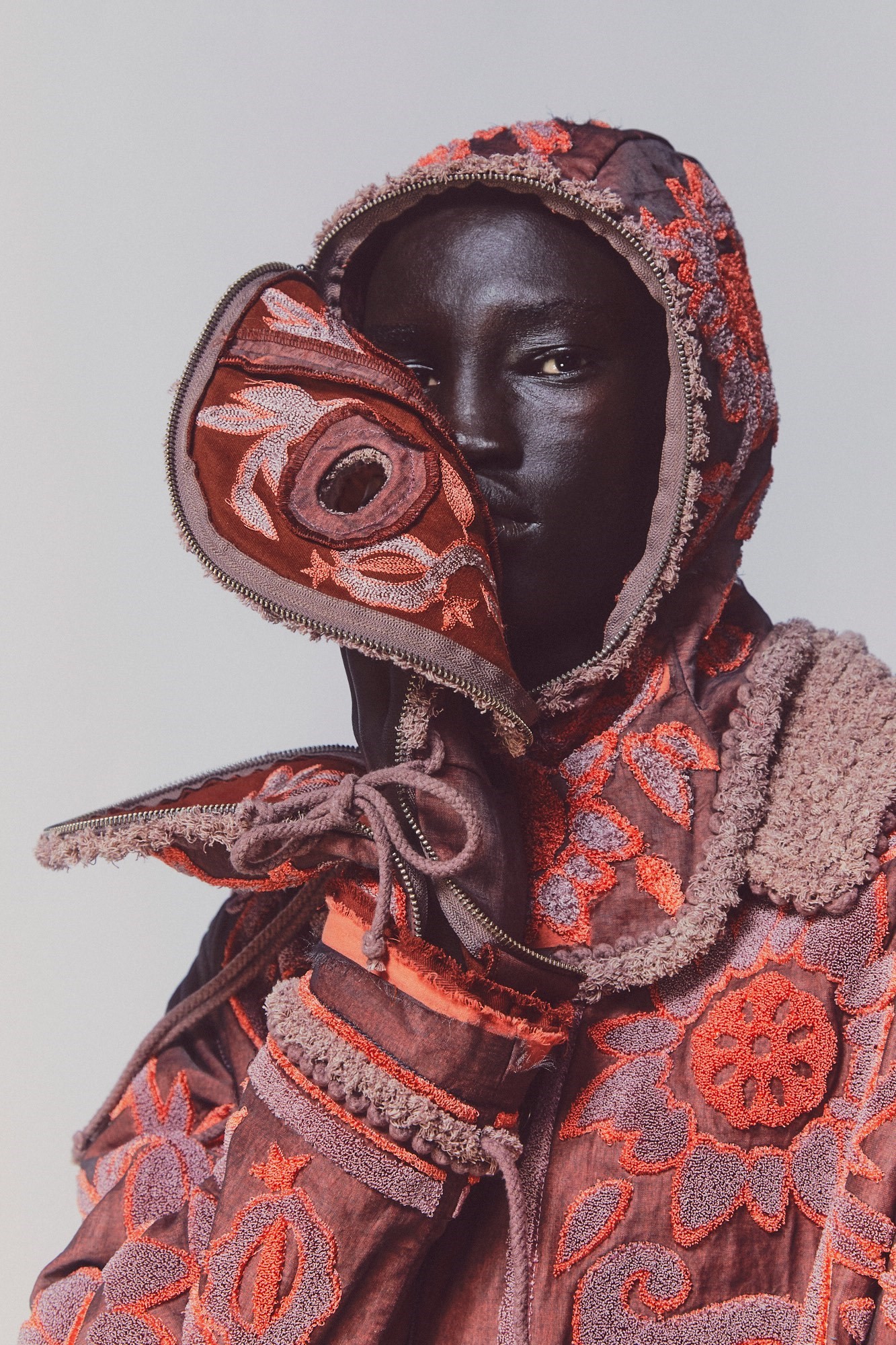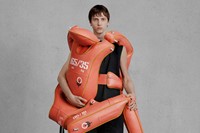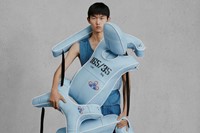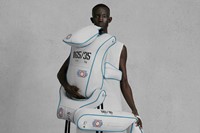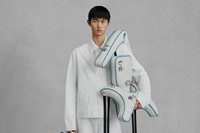A lot can happen in a decade. It’s a momentous marker of time that Craig Green – whose namesake label turns ten this year – has, however, been doing his best to avoid thinking about. “I’ve kind of been completely ignoring it,” he admits over the phone. “It’s like, I love everyone else’s birthdays but I hate my own.” Despite his reluctance to look back, Green’s achievements over the past decade are undeniably impressive. Since graduating from Central Saint Martins MA course in 2012, then rising up through Fashion East, Green has established himself as one of the most inspiring minds in menswear. Each season, his shows are a highlight of the men’s runway calendar, each of them emotional processions where the rigours of uniform give way to wildly creative sculptural fantasies. With meticulous skill and heart, he has explored the frictions between beauty and function; power and fragility; chaos and control. It’s a pursuit that has awarded him British Menswear Designer of the year three times over, gained him a legion of devoted fans around the world, a multi-year partnership with adidas, and in March of this year, an MBE for services to the fashion industry.
Dodging the weighty term of ‘anniversary’, this week sees Green release a special collection marking the milestone of ten years. Combining Spring/Summer and Autumn/Winter to form “one main moment for the year”, the collection presents a series of rhyming twin looks which explore ideas of mirroring and reflection. Dummies, dolls and puppets – uncanny objects which reflect our humanity back to us – are referenced throughout, finding their starting point in imagery of wadded figures used to practice wrestling. Human-like PVC forms inspired by this equipment are cradled on the hips of Green’s powerful men in a strange mingling of combat and care. Elsewhere, forms of self-reflection are thoughtfully expressed, with Green’s signature padded workwear, sports cord, and string lace detailing manipulated into fortifying new shapes. And while certain parts of the collection celebrate the past, it also sees the designer sail forward into uncharted waters, accessing a “new softness” for the first time in sloping looks of floor-length knits, and a freeing wind-swept fluidity in the domed, parasol-like structures seen at the collection’s close. This softness, the designer says, comes from an openness felt this year, and a desire to allow things to “be as they are”.
Tracing the ten-year story of Green’s brand while gesturing to the future, the resulting collection is about dualities: “the outward shell that you show to others and the softness of the human body underneath it“, and the bittersweet nature of endings and the new beginnings they inevitably make space for.
Here, in his own words, Craig Green speaks on the making of the collection and a decade of doing what he loves:

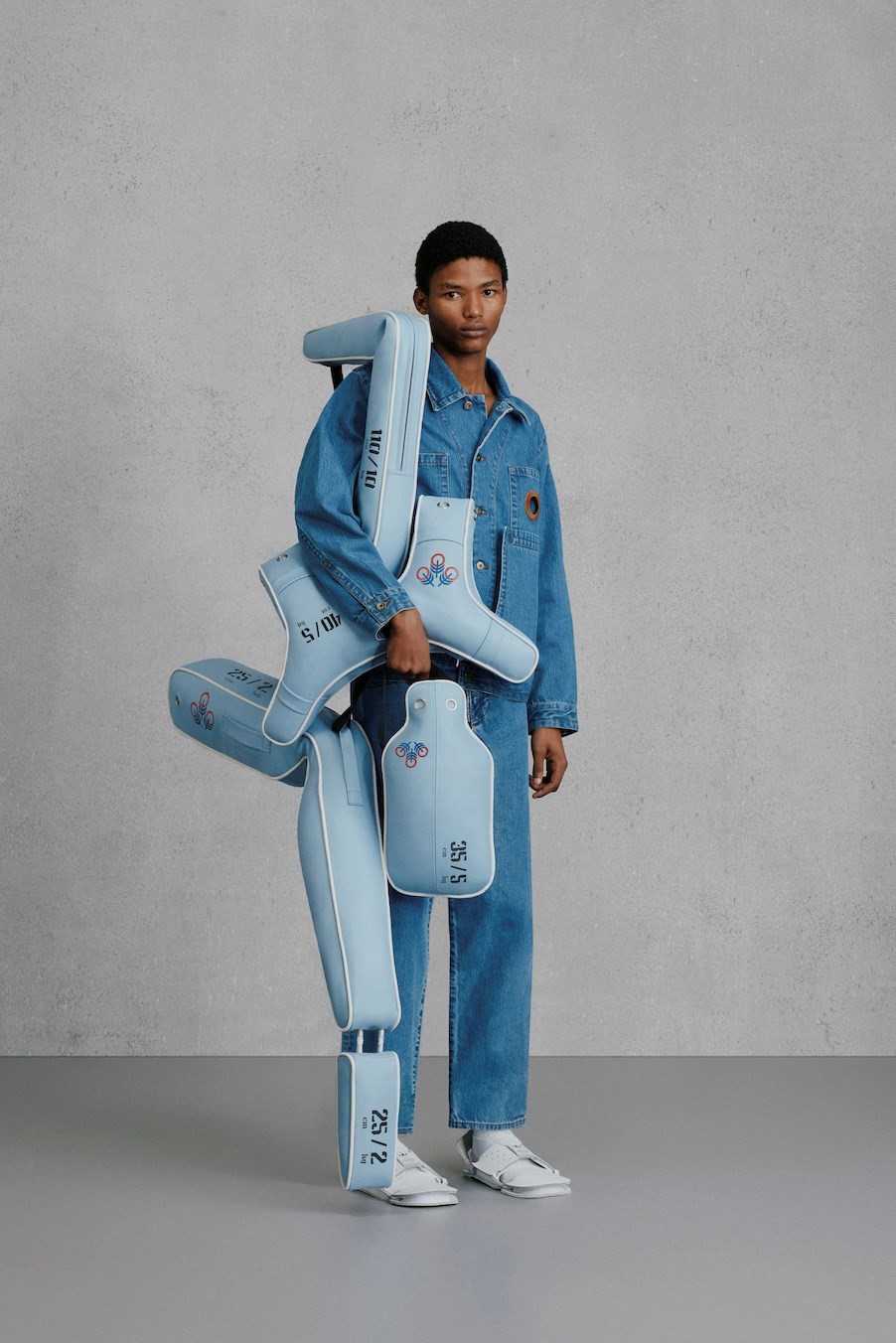
“It’s a landmark moment for the brand. Ten years. I kept getting reminded by the team, ‘You know, it’s ten years next year, Craig.’ I’ve kind of been completely ignoring it. It’s like, I love everyone else’s birthdays but I hate my own. I’m so proud of everything we’ve achieved, but when you put a number on it, it just makes you think too much. But it’s a good thing – it’s ten years, and we’re still doing what we want to do.
“[For this collection] we wanted to work with people that we’d worked with at the very beginning of the brand. My godfather is an upholsterer who taught me how to sew before I went to Central Saint Martins. He did old-school, classic upholstery for antique furniture and commercial furniture as well. He helped me during my MA to do some last-minute construction before my first-ever collection lineup with Louise [Wilson]. He made the padded figures, it was nice to work with him on something again.
“We’ve explored the idea of a shadow previously, but this time it was about the idea of mirroring. This duality idea starts in the padded men at the very beginning. We found lots of images of sports equipment, these figures that are used for practicing wrestling. I thought it was a really strange thing, because how can you wrestle with something that isn’t fighting back? It’s almost just embracing a dead weight. The material that we used for them is like a highly functional PVC, which is used in Church of England prayer cushions, but also medical beds and sports crash mats. We thought there was something dark and interesting about how they could easily be wiped clean and used by multiple people.
“It’s a very simple idea, light and dark; chaos and control; functionality and decoration – they are concepts we always circle back on” – Craig Green
“A new thing for us is the way that the models are interacting with them, because usually our sculptures either change the body or dominate the model. Here, the model has to interact with the sculpture for it to work. They are cradling them, in a weird way. When they arrived in the studio, a lot of the team were saying, ‘You should send these to lonely people. They’d be great things to hug or have as companions.’ We started calling them padded friends. They looked dominant and almost robotic when they arrived, and then they became something more fragile and romantic.
“For the tapestry looks – the ones that are embroidered and are almost like human dolls – we used a chenille carpet-like embroidery that’s made with three layers of slightly transparent fabric. The collar and the edging are all made from sports cord, which is something that we always use in the brand, but this time it’s cut into and frayed to look tasselled, almost like a sofa edging. The hands and faces can be unzipped to expose the body. There’s definitely that feeling of an outwardly external, highly decorative look that you present to the world, but inside the fragility of the human body.
“There’s definitely a softness in the collection which is something new for us. We just allowed things to fall and break on the body, which was a theme that we were talking about throughout the year: about allowing things to be without forcing them into a set format.
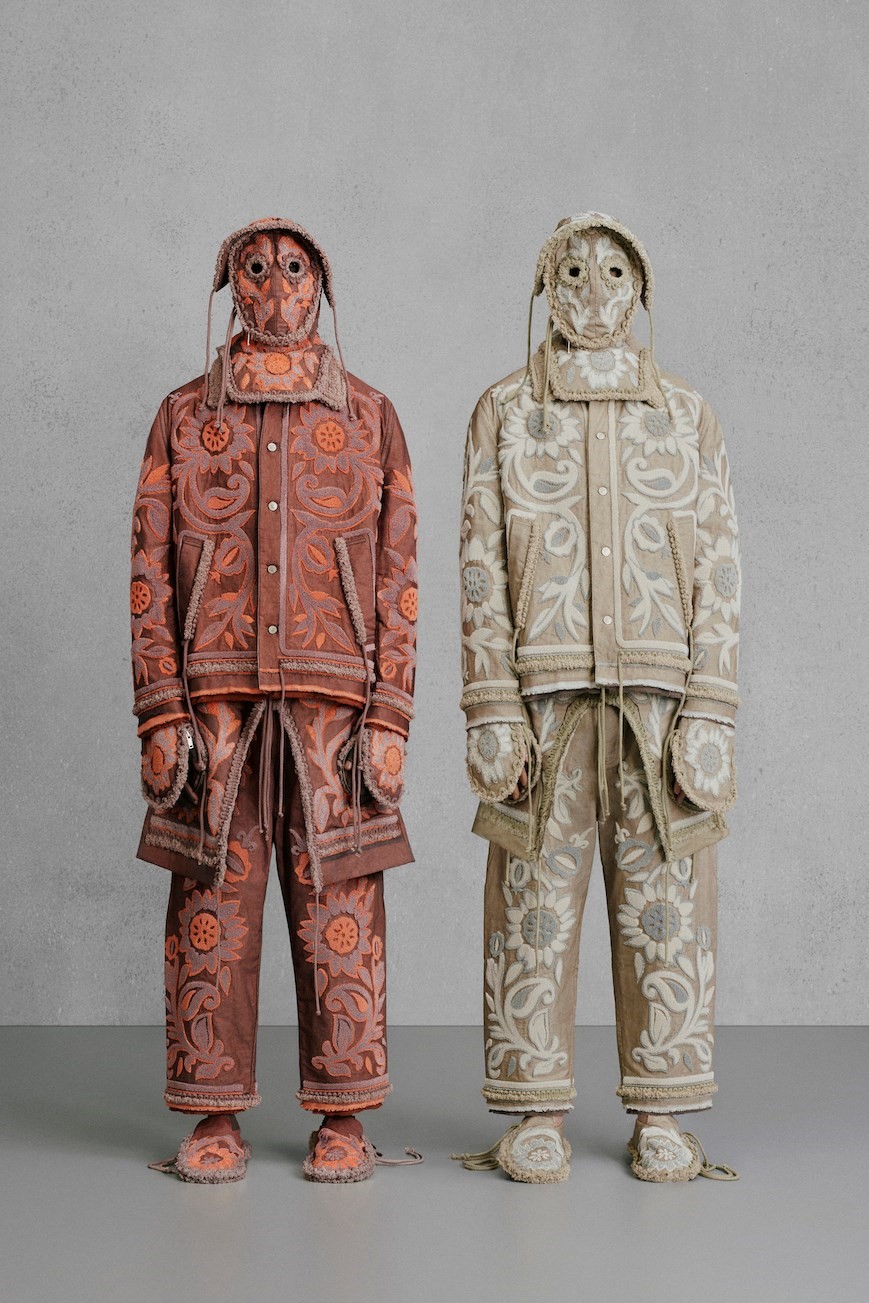
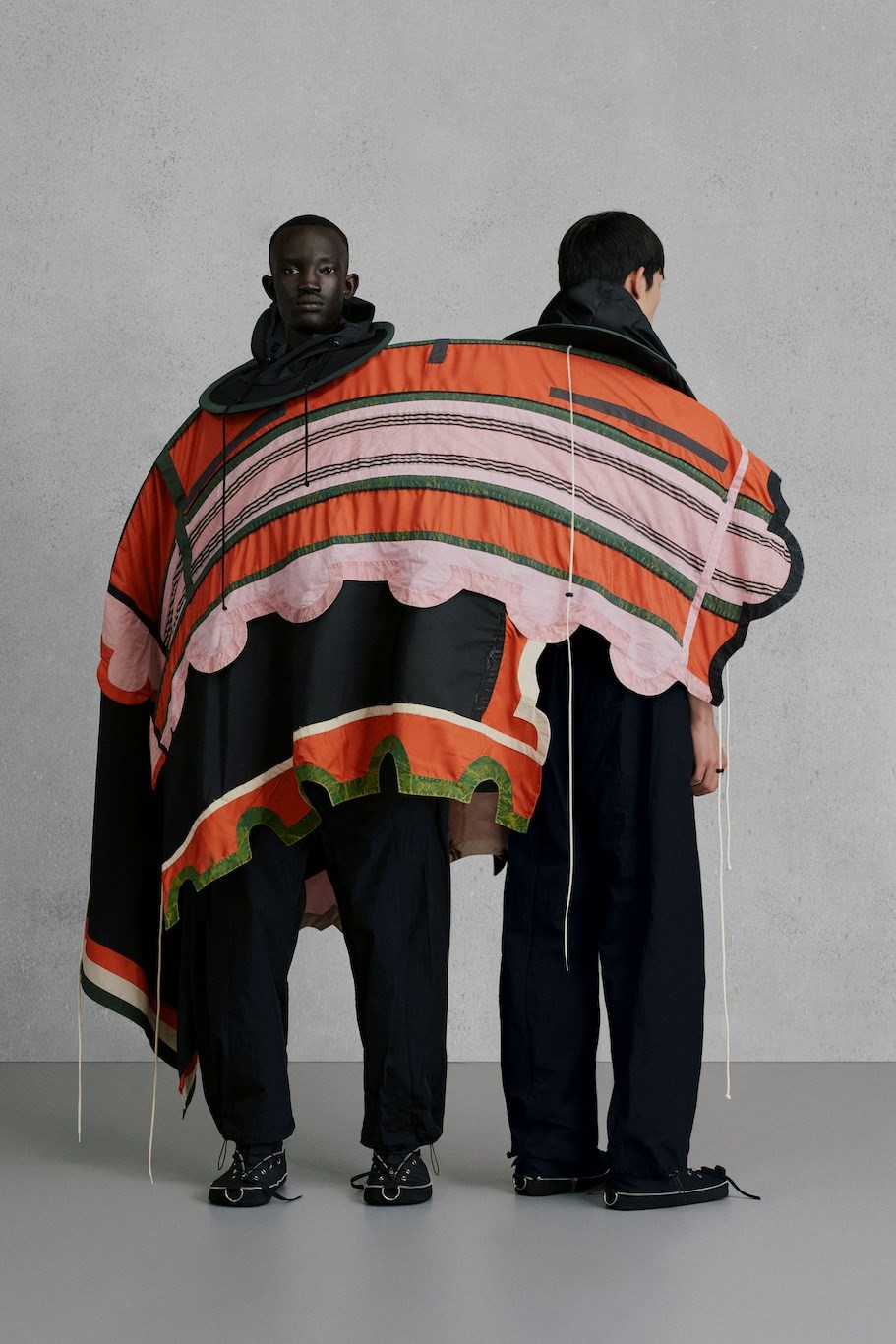
“We call the final looks ‘awning men’, because they came from a catalogue of differently shaped edges that you can buy for awnings for a shop. The idea of having something that is both functional and decorative is something that we always love. I think awnings are interesting, because obviously they protect you from the sun and the rain and protect your shop, but also they’re used as a form of advertisement. It has that feeling of trying to attract another person.
“I’ve always loved the idea of interpretation. Anything can be seen in two extremes depending on how your mind works: you can either see something as very dark, or you can see it in an innocent way. I love playing with those ideas and knowing that everything has a duality, everything has another side. It’s a very simple idea, light and dark; chaos and control; functionality and decoration – they are concepts we always circle back on. There’s so much in those forces to make exciting things from.
“This collection marks the end of ten years, but also the beginning of the next ten years. I don’t think the whole collection is self-referential, but I think there’s definitely aspects of it that feel like they’re celebrating key parts of the brand’s language. It also feels like it’s time to potentially do something new. So in a way, it’s a celebration of the beginning and a celebration of the end.”
